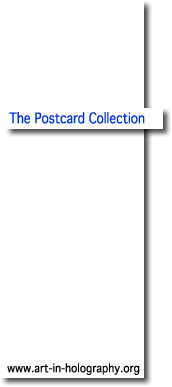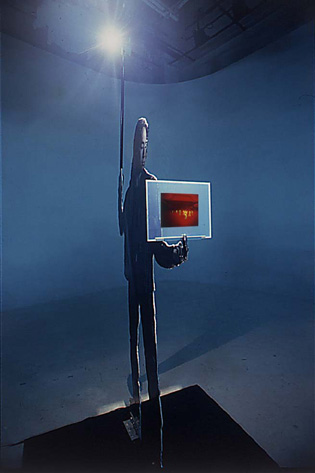

Like any other purely visual medium, it is hard to describe a hologram in words. And because holography is more than just a picture, it is hard to show it on a postcard.
Holography is so much more than just a 3-D image. It can display time, motion, fantastic colours; it can be interactive and is capable of capturing the qualities of light itself.
Unfortunately, the general public sometimes does not share this view. When the first holograms appeared - mainly just straightforward 3-D images of solid objects - they satisfied our curiosity about this new visual phenomenon. But the novelty soon wore off, especially when it became evident that unrealistic expectations of holography - holographic TV and so on - would not materialise.
I think that artists need to view holography as one of a multitude of alternative media with which to express ideas. Some of the most successful holographic works are those which are used within installations for specific effects, rather than being viewed like a typical hologram on a wall.
Working like this, holography can break down some of the prejudices towards it, and be more easily accessible to the fickle fine art world and the public in general.
Patrick Boyd spoke in Time Versus Space: Holographic Kinetics
Installation with 10 x 8 inch hologram, life-size photographs, aluminium & resin
Made at Nagoya NZ School of Art & Design, Japan
Photo © Patrick Boyd
